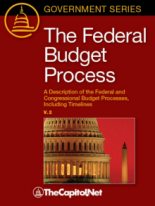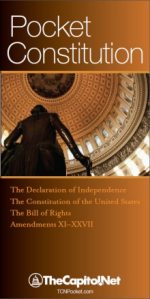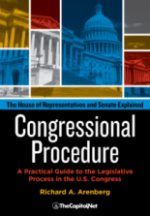From the Congressional Glossary – Including Legislative and Budget Terms
Budget Authority

The key terms of federal spending are budget authority, obligations, outlays, and spendout rate. Congress and the president enact budget authority in law. Budget authority allows federal agencies to incur obligations, such as entering into contracts, employing personnel, and submitting purchase orders. Outlays represent the actual payment of these obligations, usually in the form of electronic transfers or checks issued by the Treasury Department. The rate at which budget authority becomes outlays in a fiscal year is called the spendout rate, or the outlay rate. The spendout rate varies among agencies’ accounts depending on the timing of activity in each account.
Fiscal Law #1 – Overview
Budget Authority is provided by law to enter into obligations that will result in outlays of Federal funds. The basic forms of budget authority are appropriations, contract authority and borrowing authority. Budget authority may be classified by the period of availability (one-year, multiyear, no-year), by the timing of congressional action (current or permanent), or by the manner of determining the amount available (definite or indefinite).
Authority provided by federal law to enter into financial obligations that will result in immediate or future outlays involving federal government funds. The basic forms of budget authority include (1) appropriations, (2) borrowing authority, (3) contract authority, and (4) authority to obligate and expend offsetting receipts and collections. Budget authority includes the credit subsidy cost for direct loan and loan guarantee programs, but does not include the underlying authority to insure or guarantee the repayment of indebtedness incurred by another person or government.
Budget authority may be classified by its duration (1-year, multiple-year, or no-year), by the timing provided in the legislation (current or permanent), by the manner of determining the amount available (definite or indefinite), or by its availability for new obligations.
Typically, new budget authority is provided in the form of permanent appropriations or annual appropriations. Permanent appropriations provide new budget authority each year without any annual legislative action. Usually, this type of new budget authority is provided in legislation authorizing the program, such as in the case of most entitlement programs (e.g., Social Security benefits). Annual appropriations, on the other hand, generally provide new budget authority for the particular fiscal year for which they were enacted. In some cases, new budget authority in annual appropriations acts is made available for more than one year, or for a future fiscal year. Annual appropriations are provided in the regular appropriations bills enacted by Congress and the President each year. Annual appropriations also may be provided in supplemental appropriations acts and continuing appropriations acts (often referred to as continuing resolutions).
Obama/Boehner’s Phony Spending Cuts
New budget authority also may be made available to agencies in the form of borrowing authority, contract authority, and the authority to spend offsetting collections. Borrowing authority and contract authority allow agencies to borrow funds and enter into contracts prior to enactment of appropriations. Spending authority from offsetting collections, such as fees for certain market oriented activities, may be provided to allow agencies to obligate and spend these funds. Offsetting collections are deducted from gross budget authority and outlays at the account or higher level.
(See also Current Level Estimate; Credit Subsidy Cost, Direct Loan, and Guaranteed Loan under Federal Credit; Offsetting Collections under Collections.)
Forms of Budget Authority
Appropriations. Budget authority to incur obligations and to make payments from the Treasury for specified purposes. An appropriation act is the most common means of providing appropriations; however, authorizing and other legislation itself may provide appropriations. (See also Backdoor Authority/Backdoor Spending.)
Appropriations do not represent cash actually set aside in the Treasury for purposes specified in the appropriation act; they represent amounts that agencies may obligate during the period of time specified in the respective appropriation acts. An appropriation may make funds available from the general fund, special funds, or trust funds. Certain types of appropriations are not counted as budget authority because they do not provide authority to incur obligations. Among these are appropriations to liquidate contract authority (legislation to provide funds to pay obligations incurred against contract authority), to redeem outstanding debt (legislation to provide funds for debt retirement), and to refund receipts. Sometimes appropriations are contingent upon the occurrence of some other action specified in the appropriation law, such as the enactment of a subsequent authorization or the fulfillment of some action by the executive branch. (See also Appropriation Act; Discretionary; Mandatory; and Expired Budget Authority under Availability for New Obligations below.)
Borrowing Authority. Budget authority enacted to permit an agency to borrow money and then to obligate against amounts borrowed. It may be definite or indefinite in nature. Usually the funds are borrowed from the Treasury, but in a few cases agencies borrow directly from the public. (See also Debt, Federal.)
Contract Authority. Budget authority that permits an agency to incur obligations in advance of appropriations, including collections sufficient to liquidate the obligation or receipts. Contract authority is unfunded, and a subsequent appropriation or offsetting collection is needed to liquidate the obligations. The Feed and Forage Act (41 U.S.C. § 11) and the Price Anderson Act (42 U.S.C. § 2210) are examples of such authority.
THE VOTE PUMP
Offsetting Receipts and Collections. A form of budget authority that permits agencies to obligate and expend the proceeds of offsetting receipts and collections. The Congressional Budget Act of 1974, as amended by the Budget Enforcement Act (BEA) of 1990, defines offsetting receipts and collections as negative budget authority and the reductions to it as positive budget authority. In the President’s budget, the Office of Management and Budget (OMB) reports offsetting receipts as appropriations. (See Offsetting Receipts and Offsetting Collections.)
Duration
One-Year Authority. Budget authority available for obligation only during a specific fiscal year that expires at the end of that fiscal year. It is also known as “fiscal year” or “annual” budget authority.
Multiple-Year Authority (Multiyear). Budget authority available for a fixed period of time in excess of 1 fiscal year. This authority generally takes the form of 2-year, 3-year, and so forth, availability but may cover periods that do not coincide with the start or end of a fiscal year. For example, the authority may be available from July 1 of one fiscal year through September 30 of the following fiscal year, a period of 15 months. This latter type of multiple-year authority is sometimes referred to as “forward funding.” (For a distinction, see Advance Appropriation; Advance Funding. See also Full Funding.)
No-Year Authority. Budget authority that remains available for obligation for an indefinite period of time. A no-year appropriation is usually identified by language such as “to remain available until expended.”
Reappropriation. Legislation permitting an agency to obligate, whether for the same or different purposes, all or part of the unobligated portion of budget authority that has expired or would otherwise expire if not reappropriated. In the President’s budget, reappropriations of expired balances are counted as new budget authority or balance transfers depending on the year for which the amounts are reappropriated.
Timing of Legislative Action
Current Authority. Budget authority made available by Congress for the fiscal year or years during which the funds are available for obligation.
Permanent Authority. Budget authority that is available as the result of previously enacted legislation and is available without further legislative action. For example, authority to retain and use offsetting receipts tends to be permanent authority. Such budget authority can be the result of substantive legislation or appropriation acts.
Senate Session 2012-05-16 (16:58:28-18:02:12)
Determination of Amount
Definite Authority. Budget authority that is stated as a specified sum at the time the authority is enacted. This type of authority, whether in an appropriation act or other law, includes authority stated as “not to exceed” a specified amount.
Indefinite Authority. Budget authority that, at time of enactment, is for an unspecified amount. Indefinite budget authority may be appropriated as all or part of the amount of proceeds from the sale of financial assets, the amount necessary to cover obligations associated with payments, the receipts from specified sources–the exact amount of which is determinable only at some future date–or it may be appropriated as “such sums as may be necessary” for a given purpose.
Availability for New Obligations
Expired Budget Authority. Budget authority that is no longer available to incur new obligations but is available for an additional 5 fiscal years for disbursement of obligations properly incurred during the budget authority’s period of availability. Unobligated balances of expired budget authority remain available for 5 years to cover legitimate obligation adjustments or for obligations properly incurred during the budget authority’s period of availability that the agency failed to record. (See 31 U.S.C. §§ 1552(a), 1553(a).)
Unexpired Budget Authority. Budget authority that is available for incurring new obligations.
From Congressional Procedure, Ch. 7.A.:
The budget is like a personal budget—your plan for how much money you expect to be earning, how much money you will spend and how you will spend it.
Authorizations may be thought of as decisions you might make that impact your budget, such as signing an apartment lease, buying an automobile, purchasing a home, or even having a child.
Appropriations are like payments you actually make under your budget, like paying the rent, utility bills, or buying groceries. You might have budgeted $300 for groceries, but ended up spending $350. Your appropriation is $350.
If you spend more than you bring in, you must borrow the difference. If you spend less, you have a surplus and may be able to invest it or save for a child’s education.
Also see
- Appropriation (CongressionalGlossary.com)
- Backdoor Authority / Backdoor Spending (CongressionalGlossary.com)
- Omnibus Bill (CongressionalGlossary.com)
- Budget Deficit / Budget Surplus
- Chapter Seven – Legislating in Congress: Federal Budget Process, in Congressional Deskbook
- Chapter 7.C. The Congressional Budget Resolution in Congressional Procedure
More
- Budget Process (CongressionalGlossary.com)
- Budget of the United States Government – Govinfo.gov
- Concurrent Resolution on the Budget, FY2012, H. Rpt. 112-58 to accompany H. Con. Res. 34 – FDsys
- H.Con.Res.71 – Establishing the congressional budget for the United States Government for fiscal year 2018 and setting forth the appropriate budgetary levels for fiscal years 2019 through 2027. – Congress.gov
- “Federal Budget Process Reform in the 111th Congress,” CRS Report R40113 (21-page PDF
 )
) - “Congressional Budget Resolutions: Historical Information,” CRS Report RL30297 (47-page PDF
 )
) - “Expiration and Cancellation of Unobligated Funds,” CRS In Focus IF12329 (5-page PDF
 )
) - “Congressional Budget Resolutions,” CRS Report RL33122 (27-page PDF
 )
) - “Formulation and Content of the Budget Resolution,” CRS Report 98-512 (3-page PDF
 )
) - “Overview of the Congressional Budget Process,” CRS Report RS20368 (3-page PDF
 )
) - “Budget Process and Enforcement,” Parliamentary Boot Camp (4-page PDF
 )
) - “Introduction to Budget Authority,” CRS In Focus IF12105 (5-page PDF
 )
) - “Discretionary Budget Authority by Subfunction: An Overview,” CRS Report R41726 (60-page PDF
 )
) - The Economic Effects of Financing a Large and Permanent Increase in Government Spending, Congressional Budget Office, CBO Working Paper 57201, March 2021 (42-page PDF
 )
)
Courses
- Congressional Operations Briefing – Capitol Hill Workshop
- Drafting Federal Legislation and Amendments
- Writing for Government and Business: Critical Thinking and Writing
- Custom Training
- Congressional Operations Poster, with Federal Budget Process Flowchart
- Federal Budgeting, a Five-Course series on CD
- Congress, the Legislative Process, and the Fundamentals of Lawmaking Series, a Nine-Course series on CD
Publications

The Federal Budget Process 2E

Pocket Constitution

Citizen’s Handbook to Influencing Elected Officials: A Guide for Citizen Lobbyists and Grassroots Advocates

Congressional Procedure
CongressionalGlossary.com, from TheCapitol.Net
For more than 40 years, TheCapitol.Net and its predecessor, Congressional Quarterly Executive Conferences, have been teaching professionals from government, military, business, and NGOs about the dynamics and operations of the legislative and executive branches and how to work with them.
Our custom on-site and online training, publications, and audio courses include congressional operations, legislative and budget process, communication and advocacy, media and public relations, testifying before Congress, research skills, legislative drafting, critical thinking and writing, and more.
TheCapitol.Net is on the GSA Schedule, MAS, for custom on-site and online training. GSA Contract GS02F0192X
TheCapitol.Net is now owned by the Sunwater Institute.
Teaching how Washington and Congress work ™

